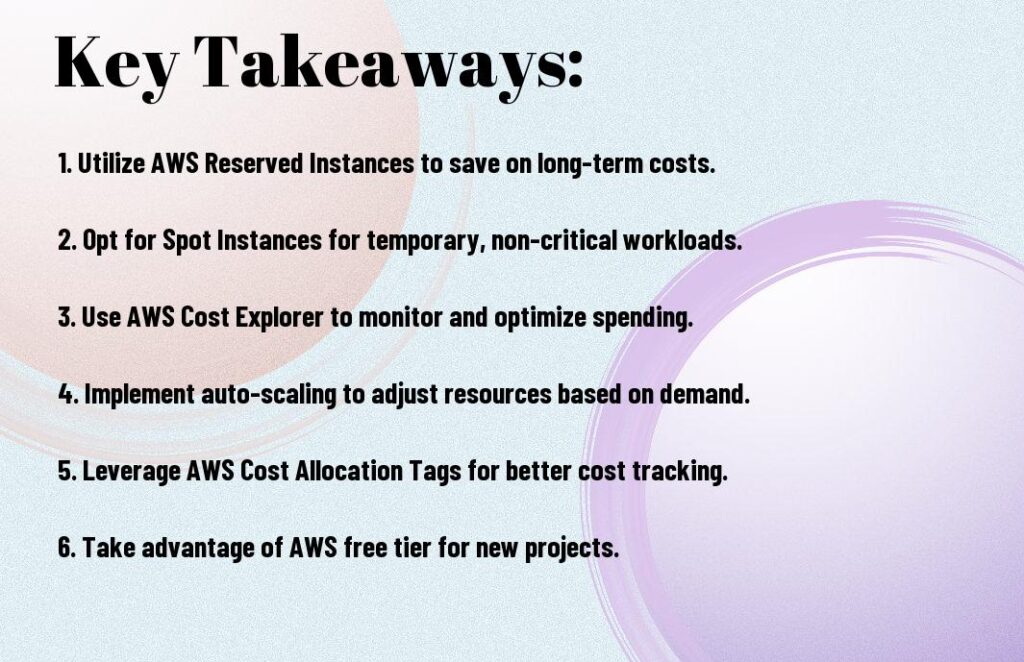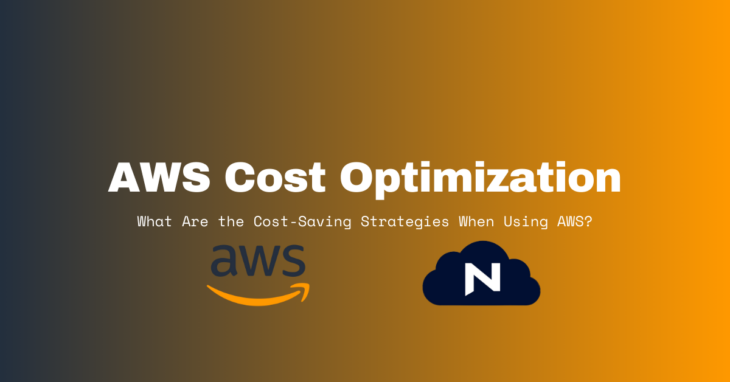Amidst the plethora of products and services offered by AWS, it can be easy for organizations and individuals to overlook the importance of implementing cost-saving strategies when utilizing the platform. AWS can be an incredibly powerful and efficient tool for businesses, but without the proper precautions, it’s easy to fall into the trap of overspending.
In this blog post, we will delve into some key cost-saving strategies that can help businesses and individuals make the most out of their AWS usage while keeping their expenses in check. For further insights, you can refer to the 10 things you can do today to reduce AWS costs article by AWS Compute Blog.
Right-Sizing AWS Resources
Any company utilizing AWS for their infrastructure needs can benefit from right sizing their resources. Right-sizing involves optimizing the capacity of your AWS resources to match the needs of your applications, maximizing performance and minimizing cost.
Identifying Underutilized Resources
Identifying underutilized resources is a crucial first step in the right-sizing process. Underutilized resources such as EC2 instances or RDS databases can significantly drive up costs without adding value to your operations. By using tools such as AWS Cost Explorer rightsizing recommendations and AWS Trusted Advisor, companies can easily identify these resources and take actionable steps to optimize their usage.
Automating Scaling with AWS Auto Scaling
Scaling vertically or horizontally based on changes in demand is a common practice for managing AWS resources. AWS Auto Scaling enables companies to automate this process, ensuring that their EC2 instances or Elastic Load Balancers automatically adjust based on predefined parameters, maximizing efficiency and cost savings.
Nonproduction workloads do not have to run outside working hours so, stop paying for resources outside of operating hours with Instance Scheduler for EC2 and RDS resources.
Leveraging Reserved Instances and Savings Plans
After understanding the basics of cost-saving strategies in AWS, it’s time to delve into leveraging Reserved Instances (RIs) and Savings Plans to maximize your cost savings. These are two popular options offered by AWS to help customers save money on their cloud infrastructure.
Understanding Reserved Instances
Understanding Reserved Instances (RIs) is crucial for optimizing your AWS costs. RIs allow organizations to reserve ec2 instances for a one- or three-year term, in exchange for a significant discount compared to On-Demand pricing. This is a great option for businesses with steady-state workloads and predictable usage, as it provides cost savings of up to 75% compared to On-Demand pricing.
Benefits of AWS Savings Plans
Plans As a cost-saving strategy, AWS Savings Plans offer flexibility and significant discounts on AWS services usage, regardless of the customer’s usage patterns. There are two types of Savings Plans, EC2 Instance Savings Plans and Compute Savings Plans, each designed to provide companies with a discounted rate in exchange for a commitment to a consistent amount of usage (measured in $/hour) for a 1 or 3-year term.
Leveraging AWS Savings Plans can help organizations achieve significant cost savings while ensuring adaptability to changes in usage patterns. By committing to a consistent amount of usage, businesses can benefit from the cost savings offered by Savings Plans, making it a valuable option for optimizing AWS costs.

Monitoring and Managing Costs
Not monitoring and managing costs can lead to overspending and budget overruns in your AWS environment. It is essential to regularly monitor your AWS usage and expenses to identify areas where cost savings can be achieved. By implementing effective cost management strategies, you can maximize the benefits of using AWS while minimizing your expenses. For more detailed information on cost-saving strategies, check out AWS Cost Savings: 12 Great Ways to Save on AWS.
Tools for Cost Management in AWS
Any organization using AWS can benefit from leveraging various cost management tools and services offered by AWS. These tools, such as AWS Cost Explorer, Cost Allocation Tags, AWS Budgets, AWS Trusted Advisor, Cost Management Hub, and rightsizing recommendations provide valuable insights for optimizing costs and improving cost efficiency in your AWS environment. By utilizing these tools, organizations can gain visibility into their AWS spending and make data-driven decisions to control and reduce costs.
Setting Budgets and Alerts
To effectively manage costs in AWS, organizations should proactively set budgets and alerts to monitor their AWS spending. By setting budget limits and defining alert thresholds, organizations can closely monitor their AWS usage and expenses. This proactive approach helps to prevent overspending and budget overruns, allowing organizations to maintain control over their AWS costs and make cost-saving adjustments as needed.
The ability to receive real-time alerts and notifications when spending exceeds predefined thresholds is crucial in proactively managing costs and ensuring financial governance within an AWS environment. By setting budgets and alerts, organizations can manage costs effectively and avoid unexpected or unnecessary expenses.
Optimizing Storage Costs
Now, let’s delve into some of the most effective strategies for optimizing storage costs when using AWS. By implementing these cost-saving techniques, you can significantly reduce your storage expenses while still meeting your business needs.
Choosing the Right Storage Service
Storage is a critical component of any AWS infrastructure, and there are several storage options to choose from. When it comes to optimizing costs, it’s important to carefully assess your storage requirements and select the most suitable storage service for your specific needs. Consider using Amazon S3 Glacier for data archiving or Amazon EBS for high-performance, frequently accessed data. By choosing the right storage service, you can avoid unnecessary costs and ensure that you are only paying for the storage that is essential for your business operations.
Amazon S3 Storage classes
Data Lifecycle Management and Automation
To effectively optimize storage costs, it’s crucial to implement a robust data lifecycle management strategy and automate data storage processes. With Amazon S3 Lifecycle Policies and Amazon S3 Intelligent-Tiering, you can automate the transition of data between storage classes based on access patterns, thus reducing storage costs while maintaining high performance. By setting up automated data lifecycle management, you can ensure that your storage expenses are optimized without compromising data accessibility and availability.
With effective data lifecycle management and automation in place, you can automatically move data to lower-cost storage tiers based on access patterns and reduce the overall storage expenses for your organization. By implementing these strategies, you can optimize your storage costs and ensure that you are only paying for the storage that is essential for your business operations.
Conclusion
Ultimately, utilizing cost-saving strategies when using AWS can significantly lower your infrastructure expenses. By leveraging options such as Reserved Instances, utilizing instance scheduler, and optimizing your storage usage, businesses can effectively reduce their AWS costs. Additionally, taking advantage of monitoring and analyzing your usage patterns can help identify areas for further optimization and potential cost savings. Implementing these strategies not only ensures efficient resource allocation but also maximizes the value of your AWS investment. Overall, with careful planning and strategic implementation, businesses can minimize their AWS expenses while still taking full advantage of the platform’s capabilities.
In a shared cloud environment, responsible resource management is everyone’s job. Employers should foster a culture of accountability where every engineer actively monitors and cleans up their resources, contributing to overall cost optimization, security, and environmental sustainability.
Unlock up to 30% AWS cost savings and achieve operational excellence with NOVA Cloud. Schedule your free consultation today.
